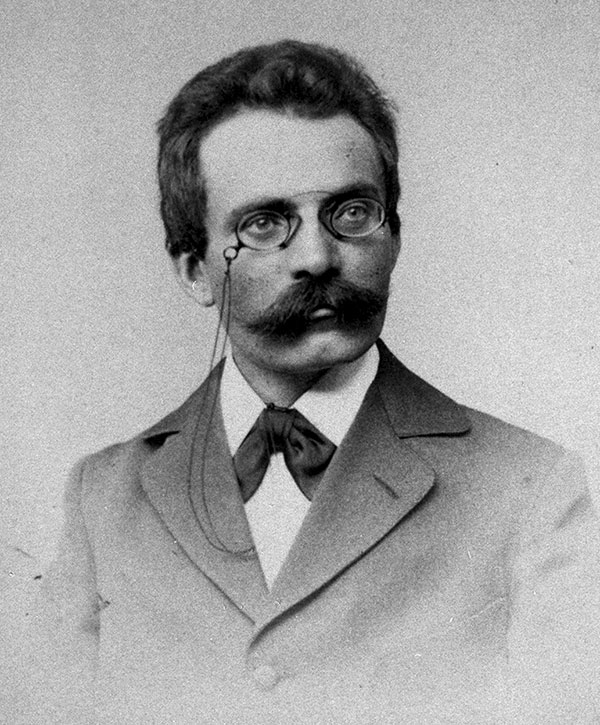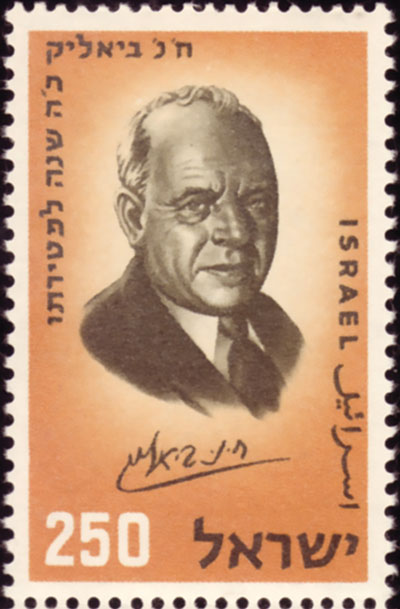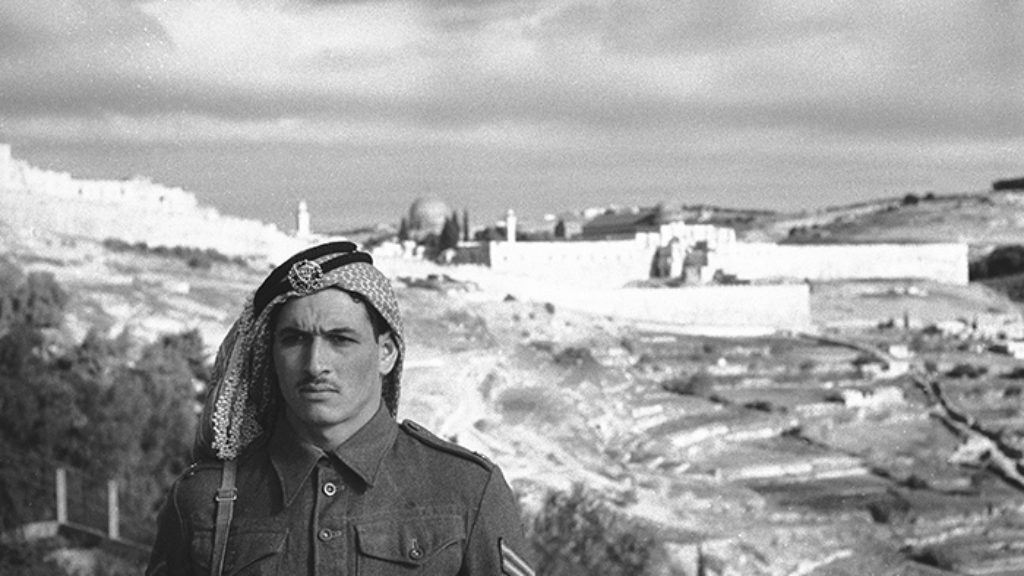Return without Returning
In his most recent book, as in the one that preceded it, the prominent and popular Israeli intellectual Micah Goodman seeks a middle path between what he regards as two unacceptable alternatives. In Catch-67: The Left, the Right, and the Legacy of the Six-Day War, he outlined a course of action for Israel between annexation of the West Bank and its complete relinquishment to the Palestinians. In his new book, The Wondering Jew, he argues that Israeli Jews should develop a relationship with Jewish tradition that falls somewhere between strict adherence and total abandonment. Catch- 67 caught the ears of many influential people,but whether it will bear any fruit is not entirely up to the Jews of Israel. By contrast, whether Goodman’s new argument will advance the cause of a kind of traditionalist secularism is up to nobody but them. And Goodman is very optimistic about Israeli Jews and their culture.
By contrast, Goodman has so little hope for American Jewry that one wonders whether he had the book translated into English solely to persuade some of its readers to move to Israel (a call he never issues explicitly). In his opinion, the only viable formula for Jewish continuity in the United States (the only country in the diaspora he discusses) is self-confinement to insular, Orthodox communities. “Israel,” he writes with characteristic declarative crispness, “is the only place where Jews are not confronted with the choice to assimilate or segregate. Israel is the only place where Jews are not forced to make the choice between tradition and modernity.”

Nevertheless, as Goodman tells us, the majority of Israel’s secular Jews have, up to now, made just such a choice—and rejected tradition. To explain how this has happened, he outlines what he calls the “foundational debate” between the two great, early 20th-century Hebrew writers, Micha Josef Berdyczewski and Ahad Ha’am. Their argument turned on the question of what it means to be a free, or secular, Jew. Berdyczewski, a Nietzschean, maintained that “a free Jew is one who is free from the past,” while Ahad Ha’am argued that “a free Jew is one who maintains a free relationship with the past.” Unfortunately, Goodman writes, “the debate over the secular Jewish soul ended with a victory for Berdyczewski and defeat for Ahad Ha’am.” Consequently, “the dominant model of secularism” in Israel was for a long time “one of rebellion, not inspiration, of neglecting the heritage of previous generations, not using the inheritance wisely.”
This is much too simplistic an account of the debate between these thinkers and its later reverberations, as Goodman himself acknowledges. Still, he is less interested in clarifying the past than in highlighting what he sees as the good news about the present, which is that “Ahad Ha’am’s secularism is back.” The old “unambiguously resistant and defiant form of secularism” is now giving way to what he calls an “alternative secularism,” one that reflects Ahad Ha’am’s attachment to a Jewish tradition cut loose from its religious underpinnings. This new trend manifests itself in new songs, “setting biblical verses, lines from prayers, and medieval poems to music,” new “books about Jewish philosophy, Kabbalah, the Talmud, and the Hebrew Bible” that are composed “for the general public and becoming best sellers,” and new institutions, “nonreligious batei midrash (Jewish study centers) that are opening up and flourishing all over Israel.” Goodman, who is the author of such bestsellers and the founder of a secular beit midrash, admits that this phenomenon “is not widespread,” but he is greatly encouraged by the fact that “it is spreading” and apparently answering a need felt very deeply by people who have become unmoored from the past.
But can it do so for long? If history is any guide, there is room for doubt. Although Goodman makes it seem as if Berdyczewski trounced Ahad Ha’am fairly quickly, in fact, Ahad Ha’am’s cultural Zionism has always exercised an enormous influence on Israeli society. His conception of Judaism as a national culture decisively shaped instruction in the Bible and Judaism in the secular educational system. Could it be that precisely this secular conception, and not ignorance or rebelliousness, is actually the source of the alienation of so many secular Israeli Jews from Judaism? This was, in fact, the gist of the penetrating critique developed in the early years of statehood by the literary critic Baruch Kurzweil and the idiosyncratic thinker Yeshayahu Leibowitz. The Jewish tradition, they argued (and Goodman acknowledges that Kurzweil, at least, had a strong case), can’t retain its identity without a transcendental dimension. This is why a deep chasm opened up between the tradition and the secular outlooks of the founders of Zionism and their Israeli heirs. The founders’ visceral attachment to the past enabled them to preserve a certain sense of closeness to their heritage, but it was too inconsistent to effectively pass on. It may ultimately have contributed to cultural decline and ignorance.
For Goodman, secularism’s chief problem is its unnecessary alienation from religious tradition. The cultural Zionist solution to this problem is to restore the lost connection, but Goodman doesn’t adequately address the question of whether this is a bridge that can really be built. He presents Ahad Ha’am’s disciple, the great Hebrew poet Chaim Nachman Bialik, for instance, as someone who called for “halakhic secularism.” But what does that mean? It is true that in his famous essay “Halakha and Aggada,” Bialik calls for a renewal of the halakha, but he never really developed this idea. As Goodman notes, he did indeed attempt to translate it into practice, in the days of the Yishuv, through the celebration of an “Oneg Shabbat,” a Saturday afternoon gathering of intellectuals and artists that combined music with lectures on intellectual and cultural topics. But where, today, outside of synagogues, does one find anything like an Oneg Shabbat?
Goodman correctly observes that Bialik’s vision has fallen flat in the State of Israel, but he fails to subject the idea of “halakhic secularism” to sufficient critical inquiry. Any effort to do so must include some sort of reflection on the impact of Bialik’s notion on Israeli culture as a whole. It would have to take note, among other things, of Yosef Hayyim Brenner’s biting critique of the inauthenticity of this kind of nostalgia for halakha. Acceptance of the halakha cannot be severed from the acceptance of divine authority, however that may be understood. Goodman, to be fair, does not flinch from asking how the fundamental contradiction in the idea of “halakhic secularism” can be overcome. He believes that the answer to this question “is already emerging: a halakha without authority,” one “that people follow not out of obedience but out of a desire to join it.” It’s very difficult, however, to share his belief that this will ever be more than a fringe phenomenon.
Goodman champions what he sees as a middle path between allegiance to tradition and surrender to modernity as a cure not only for those who have yielded too much to modernity but also for those who have clung too rigidly to tradition. He is as troubled by the petrification of Judaism in some parts of Israeli society as he is by its abandonment in others. The forms of Orthodoxy that proved (and continue to prove) to be successful strategies for self-preservation in the diaspora are unnecessary, he believes, in Israel, where assimilation is simply not a threat. This is as true, in his opinion, of ultra-Orthodoxy as it is of religious Zionism. To adjust to their new, nondiasporic situation, religious Jews in Israel must “begin to carefully peel away from their Judaism the mechanisms that have burdened and beleaguered it.” Their best guide to do so, he argues, is not some seminal thinker from the previous century but the “traditionalist” model of the Mizrahi, or Middle Eastern, Jews, which is marked by a flexibility and selectiveness that Goodman believes should be instructive for religious and secular Jews alike.

These traditionalist Jews are, at bottom, people who believe that “halakha comprises commandments but nevertheless do not personally feel commanded.” What they display is not obedience but—and here Goodman leans on the insight of the philosopher Meir Buzaglo—“faithfulness” to the past.“Traditionalist Jews,” Goodman writes, “conduct an intimate relationship with the past without being controlled by it. They are attached to their past and connected to their tradition without enslaving themselves to past generations.” Many of them, for instance, “make kiddush and drive on the Sabbath. They choose to observe the ‘thou shalt’ injunction and ignore the ‘thou shalt not’ prohibition. Halakha, in short, is not what guides their halakhic choices.”
These Jews may not sound all that different from latter-day disciples of Ahad Ha’am and Bialik, but they are. They act out of faith, if perhaps an inconsistent one. Despite its moderation and its flexibility, traditionalism is a fundamentally religious option. God and the commandments mean something to the community that upholds them, and this is what underlies their faithfulness. Because he fails to take this factor into account, Goodman misconstrues the new cultural phenomena he celebrates. The setting of medieval religious poems to music, for instance, is not a return to the vision of cultural Zionism. It is a return to tradition which reflects the openness of a broad public to religious experience. This and many other new approaches to tradition represent, perhaps for the first time, a deviation from the path marked out by the fathers of Israeli secularism, not replacing one secular founder with another.
One of the things that got lost in the translation of Goodman’s provocative book into English is its untranslatable Hebrew title: Hazara bli teshuvah, which is a play on words. Only a couple of letters differentiate it from the common Hebrew expression hazara be-teshuvah, which means, literally, a return in return, but denotes a penitential turning back to Judaism on the part of someone who had been far from it. The title suggests a return that is not religious—and that is what The Wondering Jew (the English pun is less subtle)is really all about. Goodman is encouraged by the extent to which this is happening now in Israel, but his book leaves me wondering whether everything he sees in this light is really as promising or as secular as he thinks. One wonders whether, in the long run, the choice for Israeli Jews is still between hazara be-teshuvah or no real hazara at all.
Suggested Reading
Berdyczewski, Blasphemy, and Belief
Rabbi Yechiel Yaakov Weinberg, one of the towering figures of the rabbinical establishment, found deep lessons about faith in the writings of the Nietzschean heretic Micha Josef Berdyczewski.
Tradition, Creativity, and Cognitive Dissonance
What are the conditions for a Jewish intellectual renaissance? Disagreement is one, inconsistency might be another; look at the early Zionists.

What If Everyone Is Right?
What If Everyone Is Right?

The Jewsraeli Century
Ben-Gurion declared that “with the creation of the state, we are standing on the edge of a new era. Not only in the life of the Jewish community in Israel, but . . . in the history of Judaism itself.” He was right, but not in the way he thought he would be.
Comments
You must log in to comment Log In